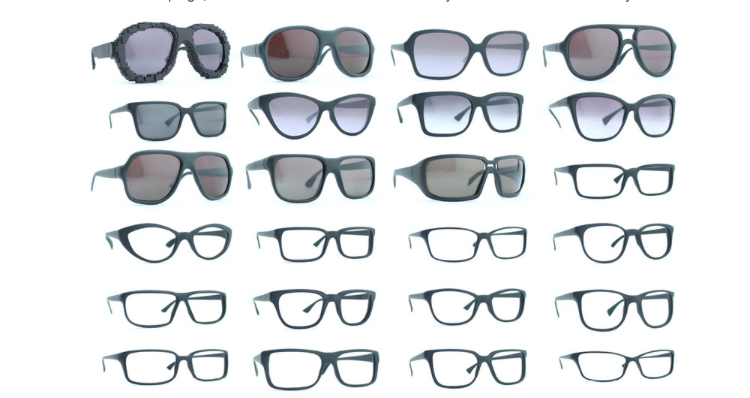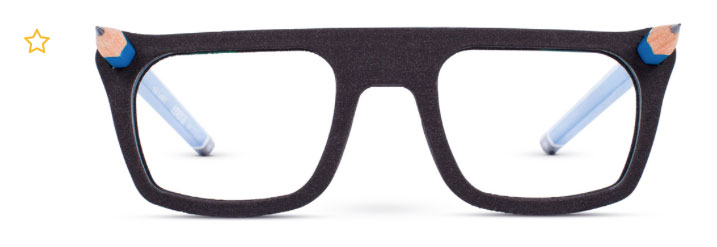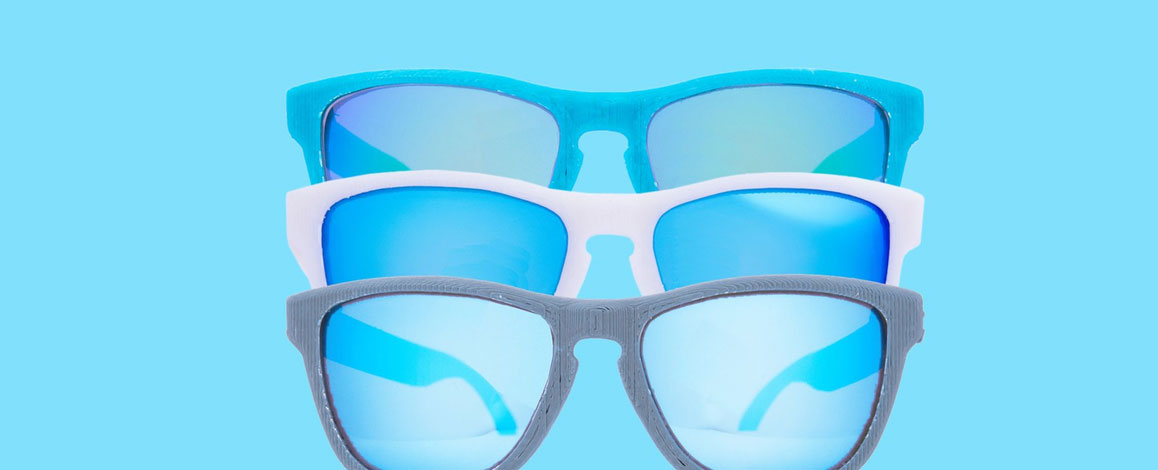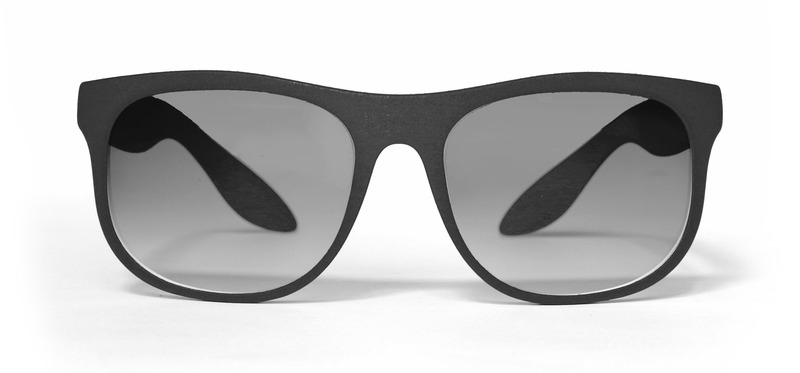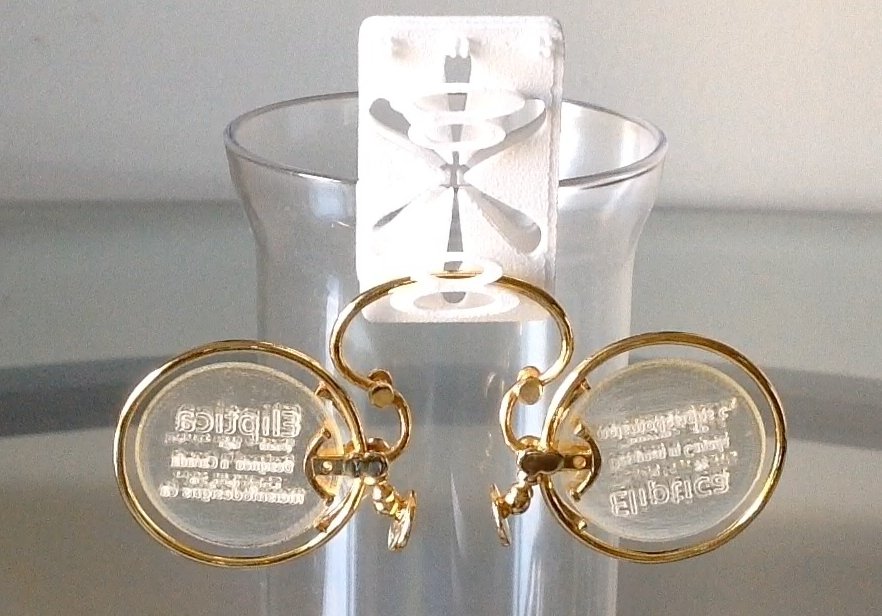Over the past week 3DPI received leads about not one, not two but there different start-ups that had identified eyewear as the ideal product to enter the final-use consumer 3D printed products market. Add these to the other companies that have announced similar projects in the past, and to those that will come (I have heard that a very large eyewear company is planning on launching a 3D printed glasses service but have had no official confirmation yet).
Whether they are made by start-ups or established companies expanding their business, sunglasses and eyeglasses seem to be the perfect product to enter this market as they are not too expensive and not too cheap, not too complex to design and not so simple that anyone can do it. Furthermore, since they go on your face, they are often the first thing people see; and thus customization is particularly significant in this regard and digital manufacturing can significantly reduce the costs for personalized manufacturing.
In fact 3D printing can make eyewear less expensive to manufacture period, and, while desktop FFF 3D printing processes can excel in terms of customization, other industrial 3D printing processes such as laser sintering or lost wax metal casting from polymer based models can assure optimal finishes in terms of exterior appearance.
So which one is the best business model for 3D printed sunglasses? Let’s take a look at what’s out there right now. In their analysis, Frame Punk’s Andreas and Nicolas mentioned Protoseyewear, Sneaking Duck and Mykita. 3DPI’s Mark Lee reported on Protoseyewear in August 2013: the San Francisco based company implements 3D printing only as a mean of offering a custom fit frame, through the use of algorithms and industrial SLS 3D printing. However their business model offers personalization as an additional service and cost, with frames going for up to $549 without lenses and no colour choice other than black.
Australia based Sneaking Duck, on the other hand, is using 3D printing as a mean of offering highly customizable original designs. Online customers can chose between four different designs, between prescription optics and sunglasses, size, a range of 21 colours (including multicolour) and a variety of shapes and styles. In this case the 3D printed factor relates to the fun and originality of the design.
German glasses manufacturer and designers Mykita was the first to create an entire 3D printed eyewear collection, called Mylon. Once again 3D printing is implemented as a feature to increase the glasses value and their cost, with frames running as high as €419 and a limited choice of colours. 3DPI reported on Mykita’s Mylon back in November 2012: they were already produced by SLS and could be customized. Over the past few months many new models have been introduced, both for sun shielding and prescription lenses.
These were all examples from ventures launched before the end of last year. Over the course of 2014 a few new start-ups emerged introducing the high versatility, personalization and delocalization of manufacturing possible through desktop 3D printing. The first one I reported on was Soda Concept. I have to admit Carlo Marchisio, Soda Concept founder, contacted me at at a time when I was somewhat starting to lose hope in a rapid growth of the consumer 3D printing market. He showed me a pair of sunglasses 3D printed in double material, wood and carbon, and they really looked like a finished product. His idea is to use a desktop Replicator 2 to create stylish ready-to-wear and highly customizable, yet affordable, sunglasses.
A couple months later (that is last week), I spoke with Davide Nastasi from Kobrin, another 3D printed sunglasses venture that spawned from Italy and took a similar concept to next step. Kobrin also bases production on a Replicator 2X system and uses it to offer personalized products and also to delocalize production across three continents: South and North America as well as Europe. Along with its natural Southern European location, the company set up a base in Brazil through a seed incubator program and is now looking to establish a presence in the US as well, thus bringing manufacturing to the target market.
Frame Punk developed its business along another evolutionary path. The Berlin based company also uses a Replicator 3D printer to test and prototype their glasses while resorting to a local industrial level SLS 3D printing service to create the final models. In their case additive manufacturing was used to seriously lower the costs for personalization, with their first sunglass design “Optimum” retailing for €149. Currently more designs are in the works, including models developed for prescription lenses.
3D printed glasses thus offer manufacturers the freedom to produce many different designs and versions of their product without having to worry about production volume to cost ratios. This means following many different approaches and serving radically different needs, while creating a valuable decorative object. This is the approach that Canadian artist Bruno Gervais followed to bring Cortica, a new unique pair of reading glasses, to the market.
With all these possibilities, the question is, is it just a matter of time before the really big eyewear producers get into the 3D printing games. But the best part about 3D printing is that it does not take millions to make a good product that people will want, just a good idea, executed well and the ability to respond to every specific demand. That is exactly what 3D printing is all about.


